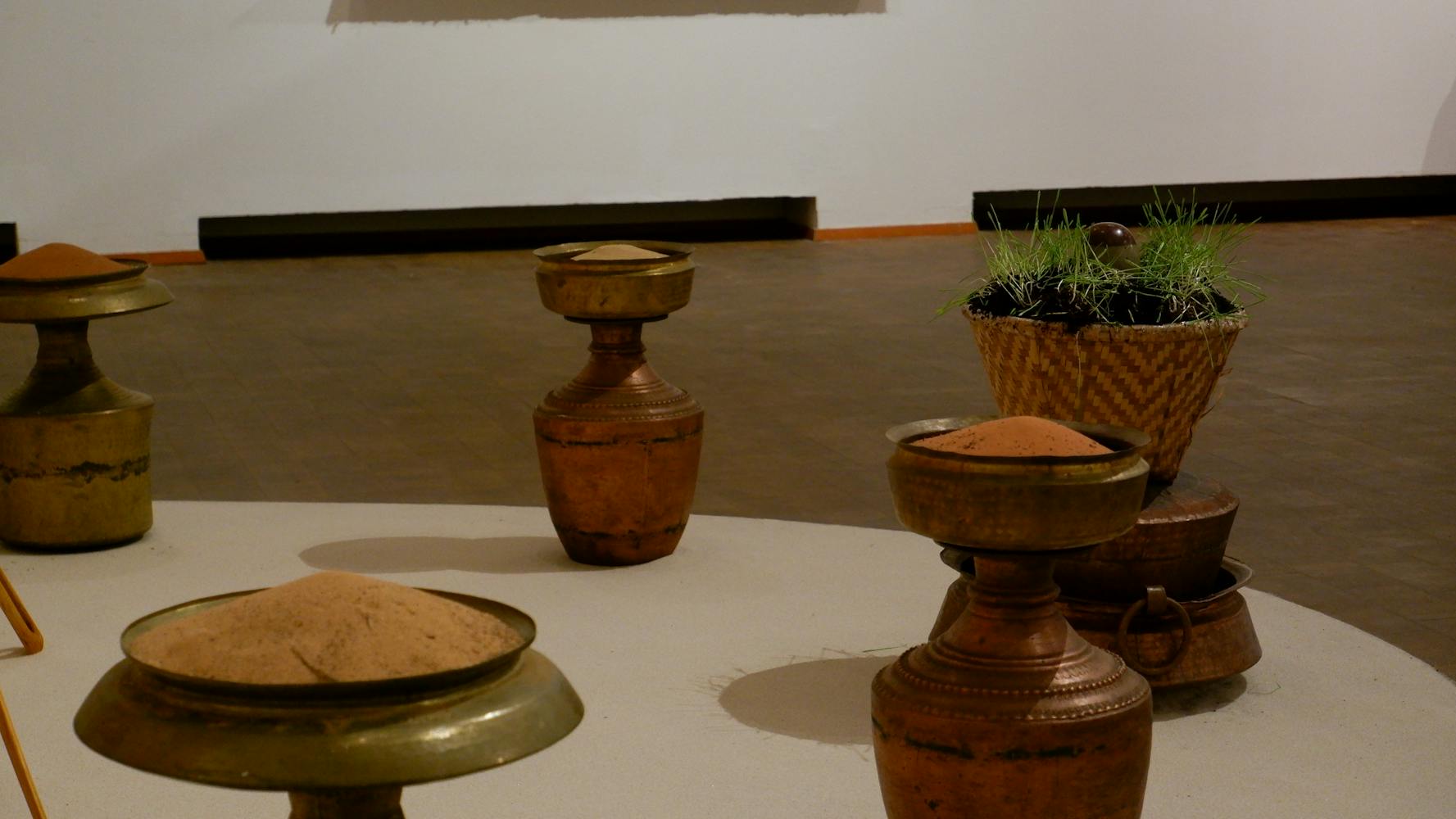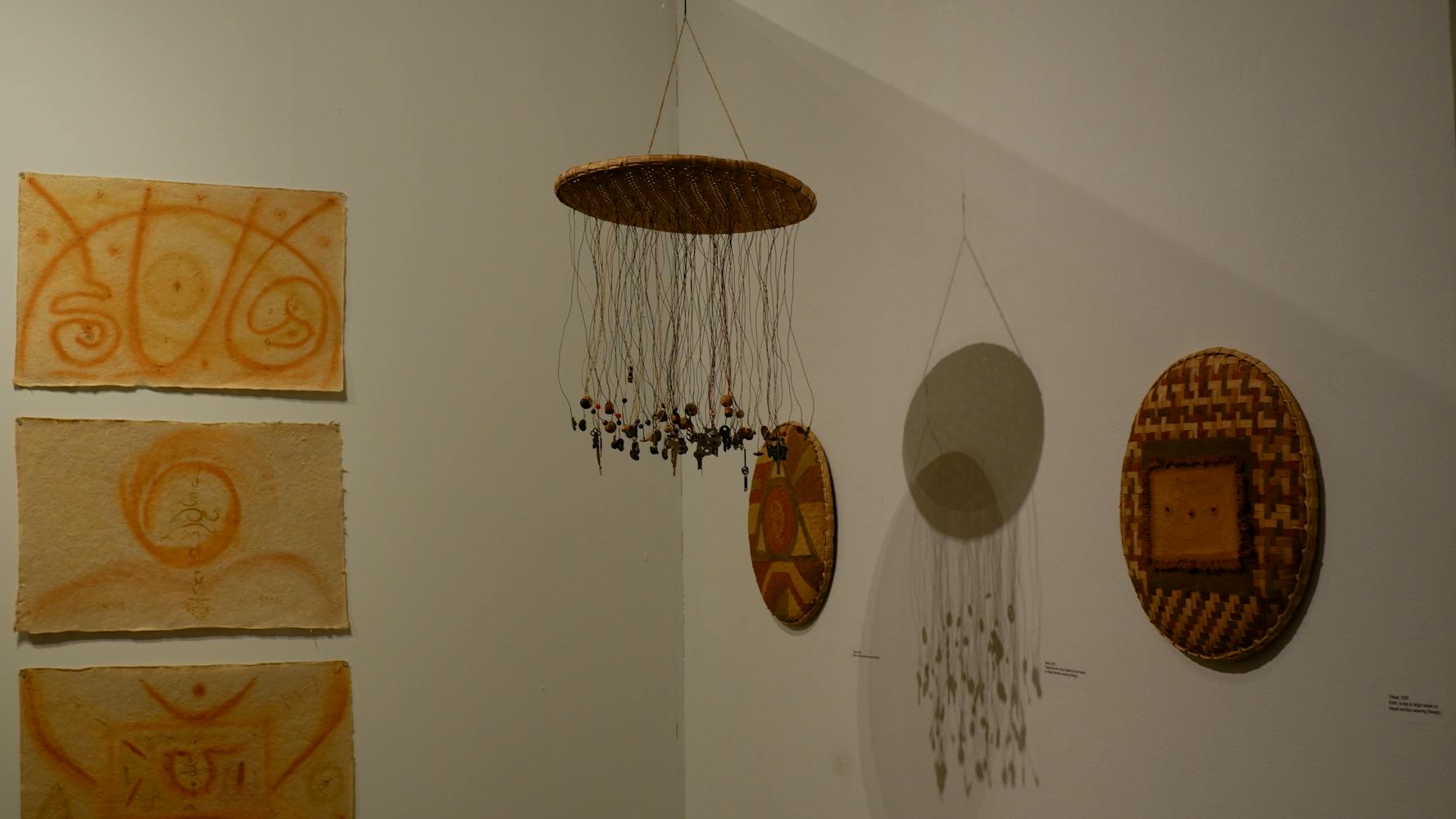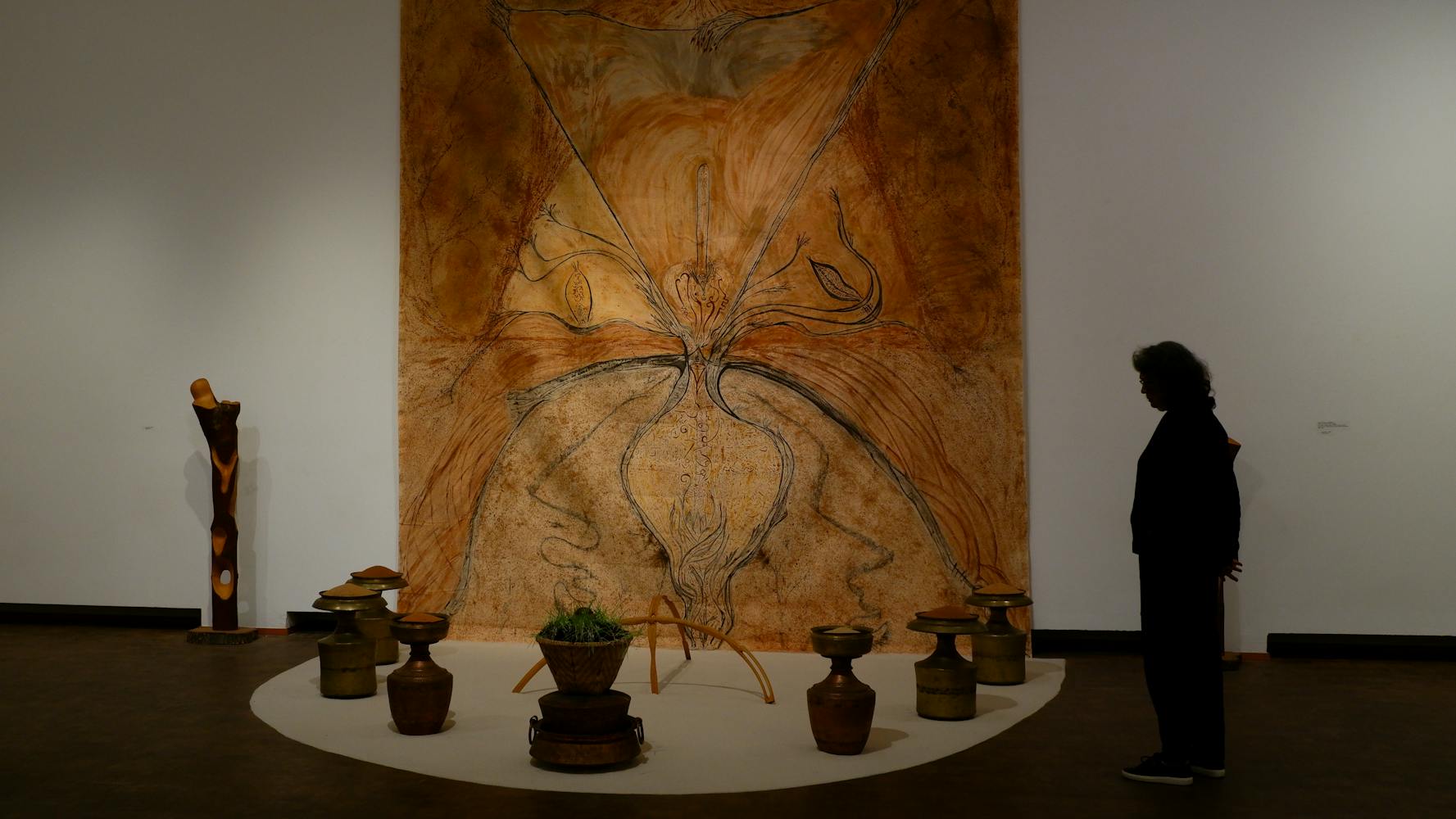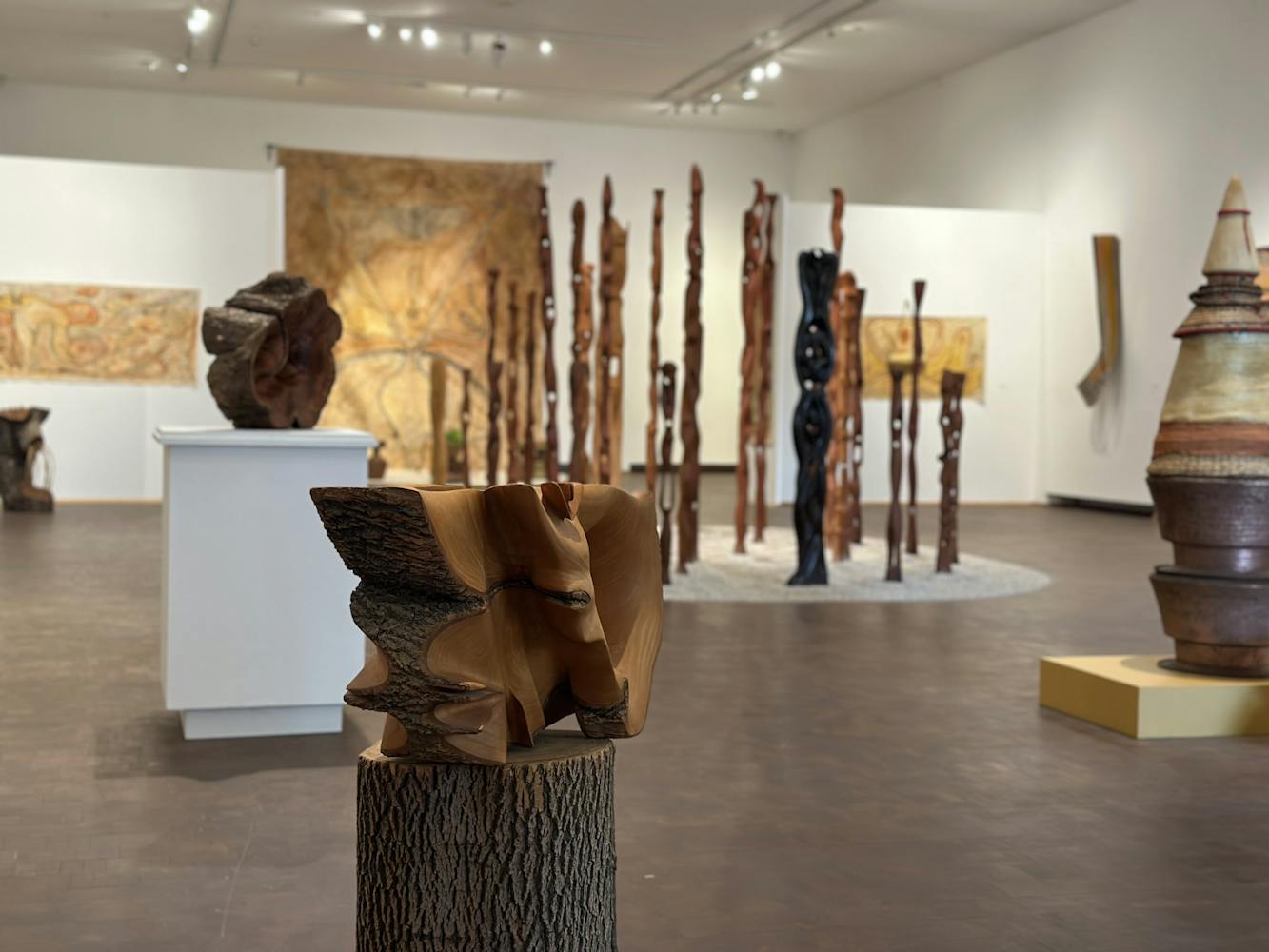The Western Gallery is featuring a new exhibition, “Himalaya to Cascadia: Transcending Boundaries” by Jyoti Duwadi, encouraging student exploration by breaking down traditional barriers in art.
Duwadi, originally from Nepal and now located in Bellingham, first came to the U.S. in 1971 as a graduate student at the University of Montana. He would later pursue a PhD in government at Claremont Graduate University. After completing his PhD in 1980, Duwadi began focusing more on his art. With no formal training, Duwadi would find a way to fuse his culture and personal beliefs into his work.
“I think it is a real benefit to him to not have that sort of formalized thought or thought process of how he might use materials when presenting artworks,” said Zoë Fejeran, the Western Gallery educator.
Duwadi said this current exhibit is largely focused on his openness to chance and discovery while also creating a connection to nature and his culture.
“It's all about chance, where I am, what I see. I have a knack of finding things,” Duwadi said.
Duwadi hopes his work can break barriers, encourage people to believe in chance and experience art in their own ways.
One way Duwadi said he breaks boundaries is by “going beyond the traditional way.” For Duwadi, this means he doesn't frame his work, a lot of his pieces are made from recycled material and he encourages visitors to interact with his artwork.
Duwadi acknowledges multiple different senses when creating his work and wants it to create a visual and physical connection.
“There are wood sculptures out [in the gallery]. I want you to experience that touch because when I'm sanding, the wood is such an amazing piece of material and also for people who are visually impaired, they use that sense,” Duwadi said.
Fejeran said she had a hard time not following traditional art installation expectations until she realized the intention behind it.
“He chose not to use any frames, a lot of them are hung on like pushpins, things like that. And I think that I had to let some of that go once I learned why he did it – which is to keep all of the life in his artwork from feeling restricted and confined, also not conforming to this Western-European way of how things have to be in museums,” Fejeran said. “That really kind of shifted my perspective about it and I really appreciate it. I appreciated being challenged in that way.”
Following this non-traditional path has allowed Duwadi to encourage exploration and discovery in his work, breaking a long-held stigma that art is for upper-class, art-educated individuals.
“I think sometimes people worry that museums are too stuffy or academic or just not for them, but that’s the opposite of how we want people to feel when they walk through our doors,” said Amy Chaloupka, curator of art at the Whatcom Museum, in an email.
Chaloupka said she believes museums should not just be a home for art, but a home for people to come experience and feel emotions through art.
Fejeran discussed how in her tour groups there always have a few students who have never been to the gallery before, and it may be because of the traditional upper-class stigma.
“It's just such a shame, people really do have that knee-jerk reaction that they won't understand something or they don't belong in that space,” Fejeran said.
Esteban Valladares, a fourth-year Western student and gallery attendant, agrees that there is a stigma surrounding art that shouldn’t be there. He’s found that the gallery adds value to his own academic career.
“It's a very peaceful place honestly, it's just nice to take a break from the constant worry of classes and studying and just get a breather and look at the beautiful art that's here,” Valladares said.
Valladares and Fejeran both said they believe that the gallery provides an opportunity for students to learn about different types of art, cultures and religions.
“It's a way to kind of see new things, new perspectives, new ideas and expose yourself to more ideas that are out there,” Valladares said.
Chaloupka encourages everyone to try exploring a museum or gallery.
“Just walk in. Go. Don’t bring any expectations with you. Maybe you’ll love it, maybe you won’t, but walk in and see what you feel,” Chaloupka said. “More often than not, people find something that grabs their attention. And things are changing all the time in our spaces. Be open to creative ideas and experiences that challenge comfort and predictability.”
The Western Gallery is free to the public, as are most of its events. Duwadi has three exhibits currently displayed on campus: the main one at the Western Gallery and two in Wilson Library, which will all be open until Dec. 9. Accompanying events for Duwadi’s exhibits include a dance performance, a visit from curator Barbara Matilsky and a perspective discussion from Michael Slouber, a Western professor.
Madison Linney (she/her) is a campus news reporter for the Front. She is a fourth-year BA marketing major with a minor in public relations. In her free time, she enjoys spending time with friends and family, going to the gym and exploring new places. You can reach her at madisonlinney.thefront@gmail.com.









